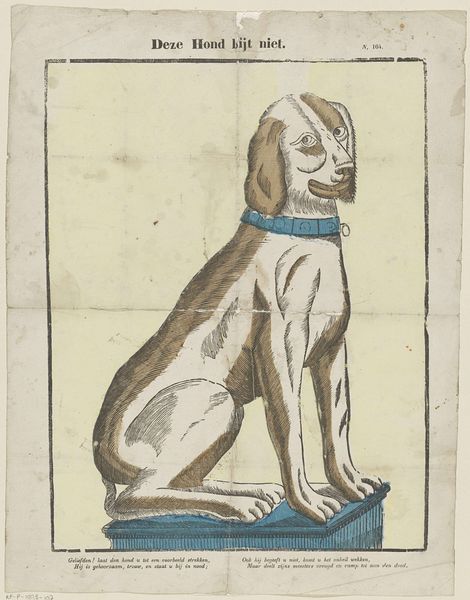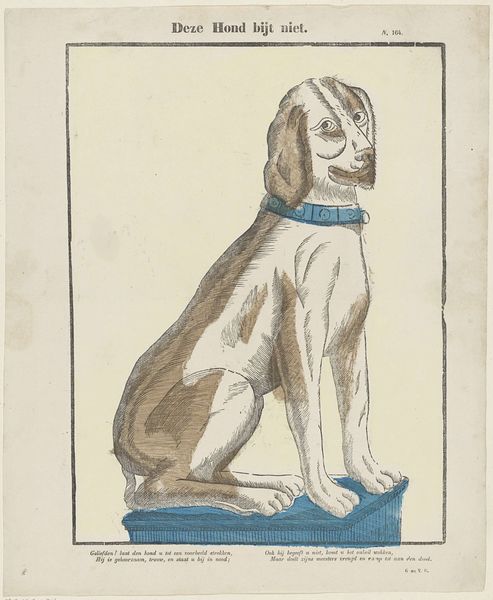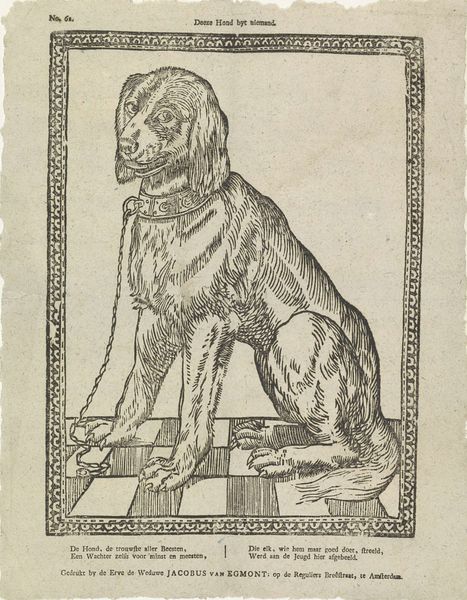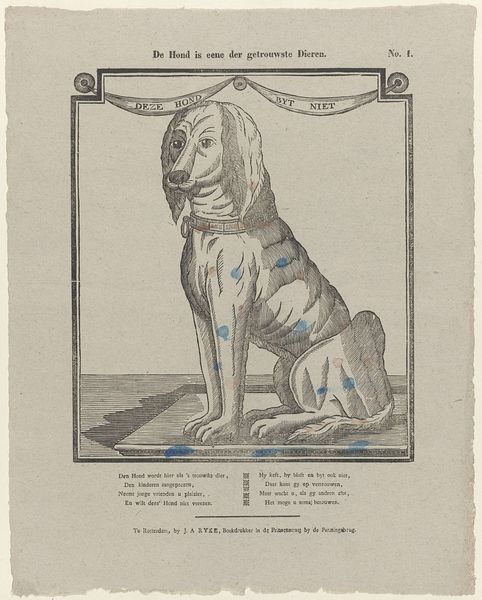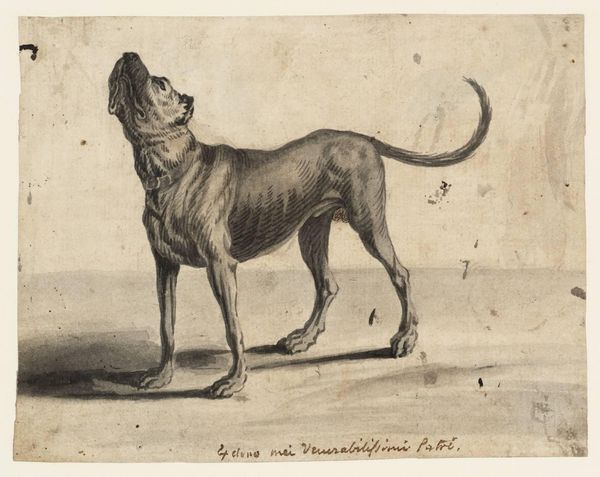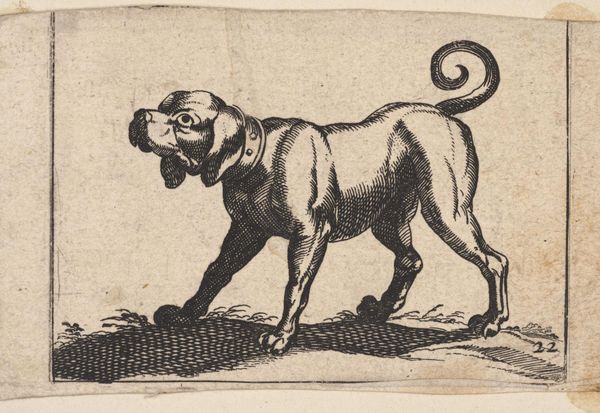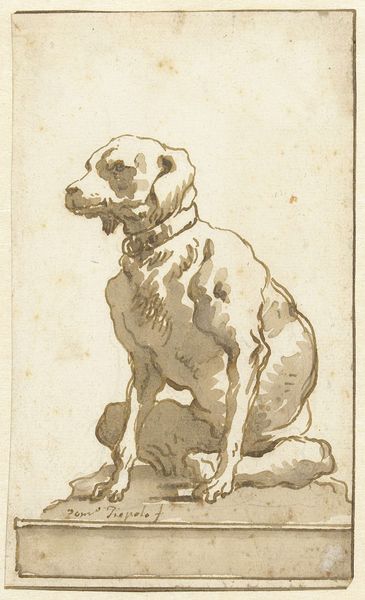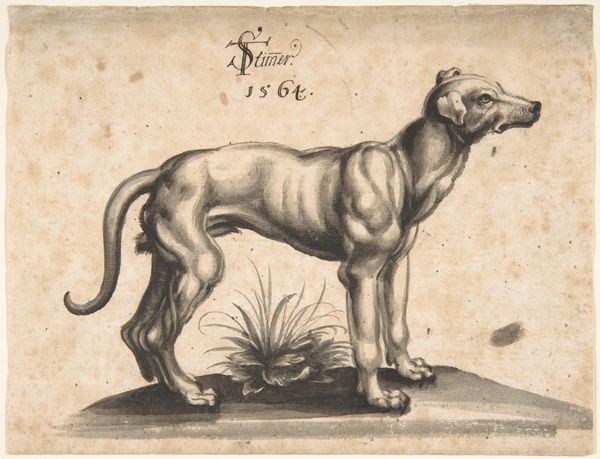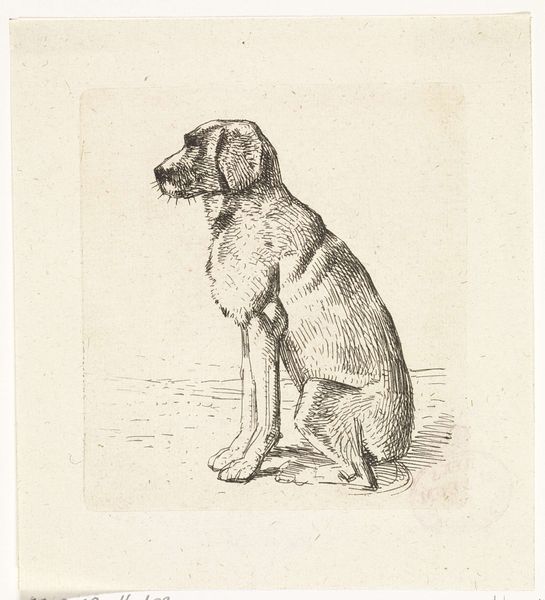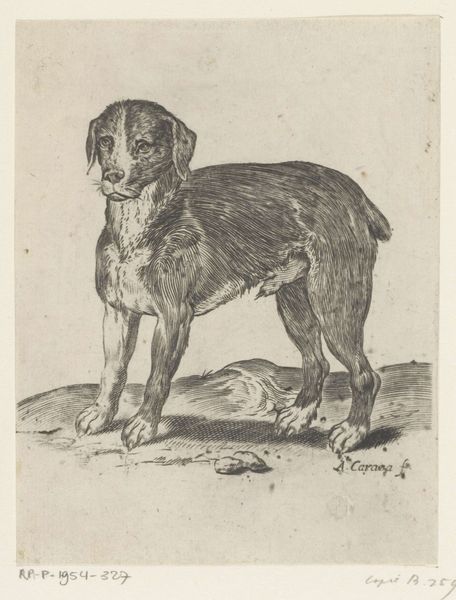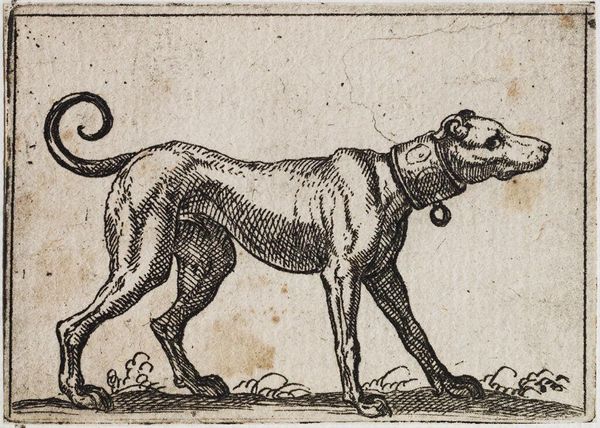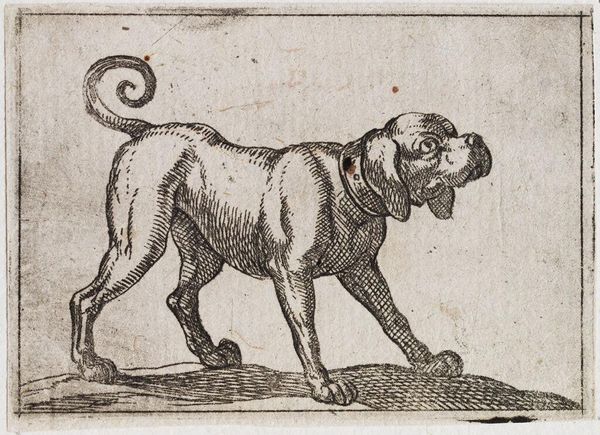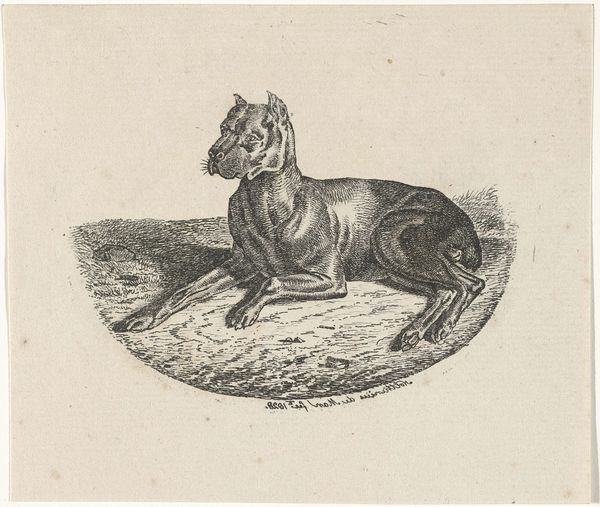
drawing, pen
#
drawing
#
dog
#
figuration
#
folk-art
#
pen
#
genre-painting
Dimensions: height 394 mm, width 314 mm
Copyright: Rijks Museum: Open Domain
Curator: Welcome. Today, we'll be discussing "Deze hond bijt niet," which translates to "This dog does not bite." It's a drawing created between 1833 and 1870 by Glenisson & Van Genechten. Editor: My initial impression is one of surprising formality. The dog, with its stiff pose and elevated platform, feels almost regal, yet the linework suggests something much more humble. Curator: The materials are modest, primarily pen on paper, categorizing it within the tradition of drawing, however, its theme aligns closely with folk art. How do you feel the visual elements reinforce cultural meanings here? Editor: Dogs, throughout history, often embody loyalty, protection, and companionship. I read its fixed gaze, almost staring right through you, as emblematic of steadfastness. Also, notice the ornate collar. That’s clearly symbolic, but of what, exactly? Status? A warning? Curator: I appreciate you flagging the materiality, but disagree with your interpretation, I read the lines and hatching as rushed. Also, I’m not entirely convinced by the use of that platform: is this just making cheap paper, with a subject that is immediately recognizable, "classy" to appeal to certain strata of the public at that time? This can be further expanded with the Dutch text next to the image that refers to social behavior within an interaction between "masters". Editor: A sharp point! If the production methods prioritized rapid output and popular appeal, then any potential symbolism in the dog itself is complicated. Curator: Exactly! And even more complex if, like you, we are trying to extract value judgements about class or quality. However, such mass-producible formats and depictions may reinforce certain expectations of quality! What did people want or expect a dog drawing to feel like at the time of it being printed? The symbolism and materiality create a contradiction that only reveals themselves with a thorough analysis of their components. Editor: So, we move from seeing the dog as a mere cultural symbol to appreciating the tangible conditions under which the image became socially meaningful! An act of artistic re-assessment and class stratification. Intriguing! Curator: Precisely. This way, the simple drawing reveals its role within broader economic and social dynamics. Editor: Thank you for enriching our perspective! It's fascinating to witness how materials, techniques, and iconography intersect in a single image.
Comments
No comments
Be the first to comment and join the conversation on the ultimate creative platform.

